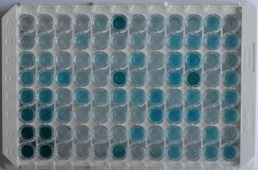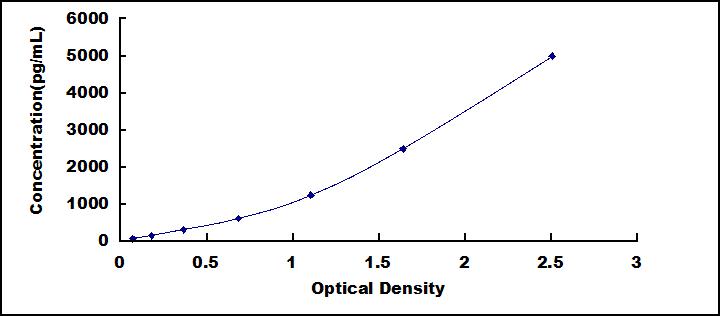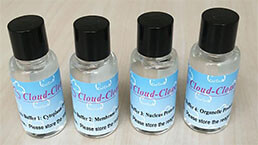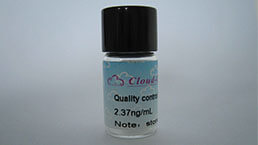Packages (Simulation)

Reagent Preparation

Image (I)
Image (II)
Certificate


High Sensitive ELISA Kit for Heat Shock 70kDa Protein 8 (HSPA8)
LAP1; HSC54; HSC70; HSC71; HSP71; HSPA10; NIP71; HSP73; Heat shock cognate 71 kDa protein; Lipopolysaccharide-associated protein 1; LPS-associated protein 1
- Product No.HED063Hu
- Organism SpeciesHomo sapiens (Human) Same name, Different species.
- Sample Typeserum, plasma, tissue homogenates and other biological fluids
- Test MethodDouble-antibody Sandwich
- Assay Length3h
- Detection Range78-5,000pg/mL
- SensitivityThe minimum detectable dose of this kit is typically less than 28pg/mL.
- DownloadInstruction Manual
- UOM 48T96T 96T*5 96T*10 96T*100
- FOB
US$ 431
US$ 616
US$ 2772
US$ 5236
US$ 43120
For more details, please contact local distributors!
Specificity
This assay has high sensitivity and excellent specificity for detection of High Sensitive Heat Shock 70kDa Protein 8 (HSPA8).
No significant cross-reactivity or interference between High Sensitive Heat Shock 70kDa Protein 8 (HSPA8) and analogues was observed.
Recovery
Matrices listed below were spiked with certain level of recombinant High Sensitive Heat Shock 70kDa Protein 8 (HSPA8) and the recovery rates were calculated by comparing the measured value to the expected amount of High Sensitive Heat Shock 70kDa Protein 8 (HSPA8) in samples.
| Matrix | Recovery range (%) | Average(%) |
| serum(n=5) | 97-105 | 102 |
| EDTA plasma(n=5) | 93-103 | 99 |
| heparin plasma(n=5) | 88-98 | 94 |
Precision
Intra-assay Precision (Precision within an assay): 3 samples with low, middle and high level High Sensitive Heat Shock 70kDa Protein 8 (HSPA8) were tested 20 times on one plate, respectively.
Inter-assay Precision (Precision between assays): 3 samples with low, middle and high level High Sensitive Heat Shock 70kDa Protein 8 (HSPA8) were tested on 3 different plates, 8 replicates in each plate.
CV(%) = SD/meanX100
Intra-Assay: CV<10%
Inter-Assay: CV<12%
Linearity
The linearity of the kit was assayed by testing samples spiked with appropriate concentration of High Sensitive Heat Shock 70kDa Protein 8 (HSPA8) and their serial dilutions. The results were demonstrated by the percentage of calculated concentration to the expected.
| Sample | 1:2 | 1:4 | 1:8 | 1:16 |
| serum(n=5) | 83-93% | 78-102% | 78-89% | 79-92% |
| EDTA plasma(n=5) | 84-98% | 81-99% | 90-102% | 94-102% |
| heparin plasma(n=5) | 92-102% | 95-105% | 83-97% | 93-105% |
Stability
The stability of kit is determined by the loss rate of activity. The loss rate of this kit is less than 5% within the expiration date under appropriate storage condition.
To minimize extra influence on the performance, operation procedures and lab conditions, especially room temperature, air humidity, incubator temperature should be strictly controlled. It is also strongly suggested that the whole assay is performed by the same operator from the beginning to the end.
Reagents and materials provided
| Reagents | Quantity | Reagents | Quantity |
| Pre-coated, ready to use 96-well strip plate | 1 | Plate sealer for 96 wells | 4 |
| Standard | 2 | Standard Diluent | 1×20mL |
| Detection Reagent A | 1×120µL | Assay Diluent A | 1×12mL |
| Detection Reagent B | 1×120µL | Assay Diluent B | 1×12mL |
| TMB Substrate | 1×9mL | Stop Solution | 1×6mL |
| Wash Buffer (30 × concentrate) | 1×20mL | Instruction manual | 1 |
Assay procedure summary
1. Prepare all reagents, samples and standards;
2. Add 100µL standard or sample to each well. Incubate 1 hours at 37°C;
3. Aspirate and add 100µL prepared Detection Reagent A. Incubate 1 hour at 37°C;
4. Aspirate and wash 3 times;
5. Add 100µL prepared Detection Reagent B. Incubate 30 minutes at 37°C;
6. Aspirate and wash 5 times;
7. Add 90µL Substrate Solution. Incubate 10-20 minutes at 37°C;
8. Add 50µL Stop Solution. Read at 450nm immediately.
GIVEAWAYS
INCREMENT SERVICES
| Magazine | Citations |
| Journal of Translational Medicine | Molecular mechanisms of anti-tumor properties of P276-00 in head and neck squamous cell carcinoma PubMed: 23414419 |
| Biochimica et Biophysica Acta (BBA)-General Subjects | Modulation of gut microbiota contributes to curcumin-mediated attenuation of hepatic steatosis in rats pubmed:28341485 |
| Mejora en la clasificación de pacientes mediante técnicas de Machine Learning: Aplicación a un problema neurológico a partir de la obtención de 14 biomarcadores | |
| Cancer Cell International | Bufalin Induced Mitochondrial Dysfunction Promotes Apoptosis of Glioma Cells by Regulating Annexin A2 and DRP1 Proteins |
| Cancer Cell Int | Bufalin induces mitochondrial dysfunction and promotes apoptosis of glioma cells by regulating Annexin A2 and DRP1 protein expression 34376212 |













